
Pic. 1.20 Engine/transmission mounting
1. Mounts can be replaced by hanging the engine with transmission on a winch or supporting it with a jack (photo).
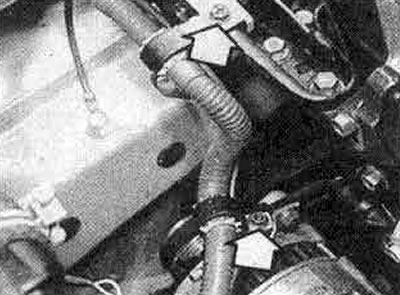
10.1A Unscrew the electrical wiring clamps (marked with arrows) and disconnect the generator wiring...
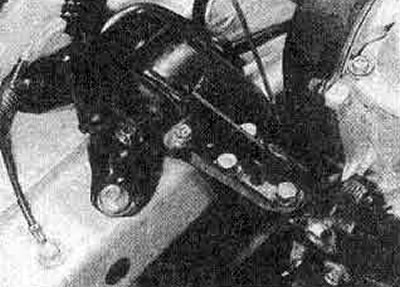
10.1V... before dismantling the right engine installation
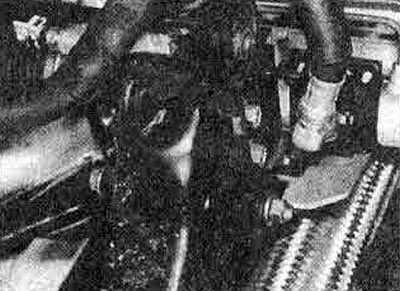
10.1C Rear sub-mounting engine/transmission (engine removed)
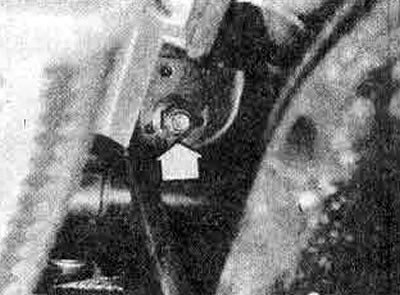
10.1D Rear engine/transmission nut visible from below (see photo 12.31)

10.1E Rear mountings of the longitudinal element of the engine bracket (marked with an arrow)

10.1 F Front fastenings of the longitudinal element of the engine bracket
2. The component including the flexible insulator must be replaced if the rubber becomes sticky or deformed.
3. Tighten the fasteners in the following order:
- (A) Right mount
- (b) Left mount
- (With) Rear (The main thing) fastening
- (d) Remove the jack or winch so that the entire weight of the engine/transmission is on the mounts, then tighten the bolts and nuts on the lower rear mount and front buffer rod in the order shown in Fig. 1.21.
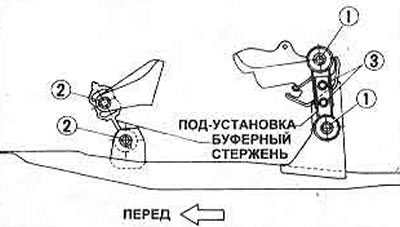
Pic. 1.21 Front and rear engine/transmission mount compression sequence
Adjustment
4. If the engine vibrates strongly at idle speed, check that all fasteners are in good condition and securely tightened to the tightening torques specified in Specifications, then check the following.

Pic. 1.22 Adjusting the front buffer rod engine/transmission
5. Referring to Figure 1.22, check that the distances A and B of the front buffer rod (photo) were equal, and the distances between bolts 1 and 2 should be 100 mm. Loosen mounting bolts and nuts and adjust if necessary.
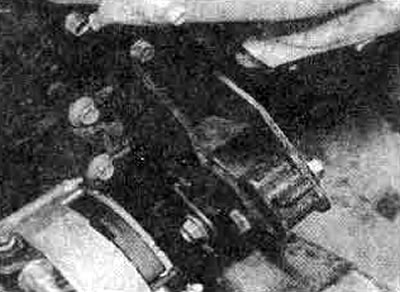
10.5 Front engine/transmission buffer rod (engine installed)
6. Pinch the top end of the buffer rod and move it back and forth and side to side; it should move smoothly. If not, loosen bolts 1 and 2 and re-tighten them in reverse order. If the rod still does not move smoothly, replace it (photo).

10.6 Replace the buffer rod if it moves harshly
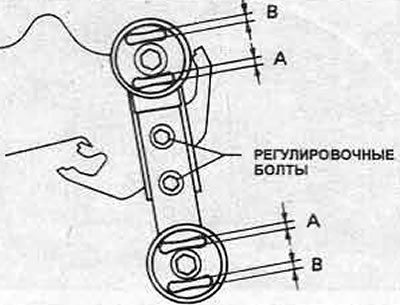
Pic. 1.23 Adjusting the rear engine/transmission submount (Chapter 10)
7. Referring to Figure 1.23, check that the rear lower mounting clearances A and B are equal when the engine is running at idle speed; On automatic transmission models, check clearance A with the transmission in position D and clearance B with the transmission in position R. If either pair of gaps is closed, loosen the two adjustment bolts and change the length of the lower setting until the correct adjustment is achieved (photo).
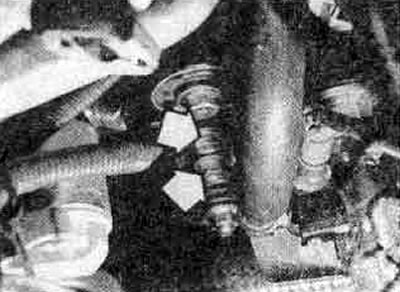
10.7 Rear engine/transmission sub-mounting (engine installed) - adjusting bolts are marked with arrows
8. If the front and rear mountings are adjusted correctly, check that the radiator does not vibrate when the engine is idling. If there is vibration, check the radiator mountings and replace them if necessary (Section 2).
9. On models with automatic transmission, check the vibration of the dynamic shock absorbers at idle (position D selected). If any shock absorber does not vibrate, replace it.
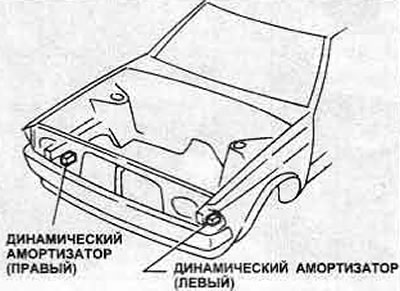
Pic. 1.24 Location of dynamic shock absorbers - automatic transmission